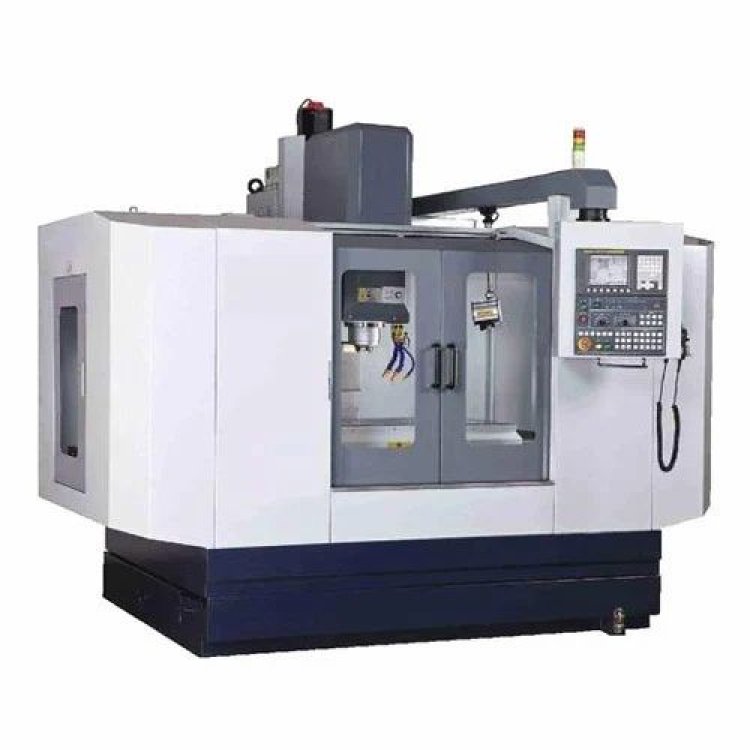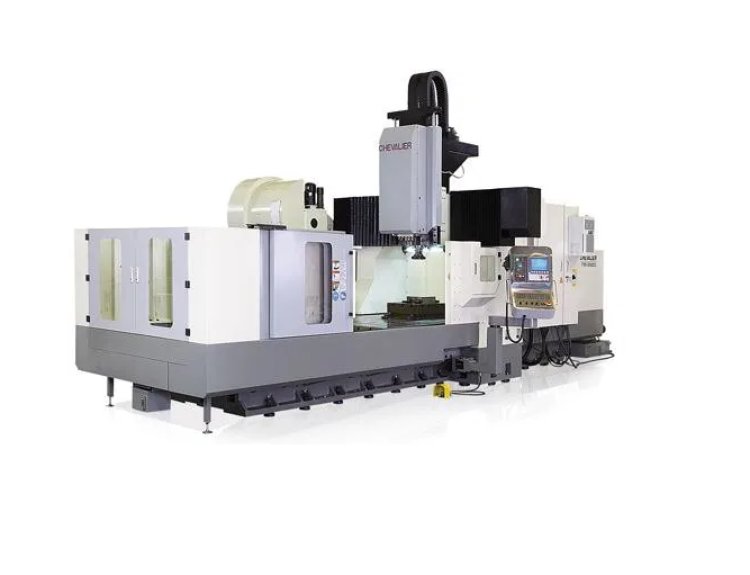Understanding the Differences and Applications Bridge Machining Center vs. 3-Axis Machining Center
Both machines have their place in the world of precision manufacturing, and understanding their differences will help you make an informed decision.
Share this Post to earn Money ( Upto ₹100 per 1000 Views )

In the world of precision machining, the equipment you choose can make a significant difference in the quality and efficiency of your production. Among the many types of machining centers available, bridge machining centers and 3 axis machining center are two of the most commonly used. Both have their specific strengths and applications. In this article, we will explore the key differences between these two types of machining centers and discuss the advantages of each in various industrial applications.
1. Introduction to Machining Centers
Machining centers are highly versatile machine tools that are used to perform a variety of tasks, including drilling, milling, and cutting. These machines are widely used in industries like aerospace, automotive, and manufacturing, where precision and efficiency are paramount. Machining centers come in different configurations, with each offering unique advantages for specific applications.
Two popular types of machining centers are the bridge machining center and the 3-axis machining center. While both machines offer precision and versatility, they differ in terms of design, capabilities, and ideal use cases.
2. What is a Bridge Machining Center?
A bridge machining center, also known as a bridge mill or gantry mill, is a type of machining center that features a fixed table and a bridge-like structure that spans over the work area. The spindle moves along the bridge, allowing for large, heavy workpieces to remain stationary while the tool moves to perform various operations.
a) Structure and Design
The bridge design allows for more stability when working on larger components, as the workpiece is typically fixed to the table while the cutting tool moves above it. This configuration provides superior rigidity, which is essential for machining large parts with high precision.
Bridge machining centers are often equipped with multiple axes, including 5-axis configurations, but they are also available in 3-axis designs. The key advantage of a bridge machining center is its ability to handle large, heavy components while maintaining accuracy and stability.
b) Applications of Bridge Machining Centers
Bridge machining centers are widely used in industries that require machining of large parts. Some common applications include:
-
Aerospace Components
-
Automotive Parts
-
Mold and Die Manufacturing
-
Heavy Equipment Manufacturing
These machines excel in applications that require precision machining of oversized parts, especially when working with materials like aluminum, steel, and other metals.
3. What is a 3-Axis Machining Center?
A 3-axis machining center is one of the most commonly used types of CNC machines in the industry. As the name suggests, a 3-axis machining center operates along three axes: the X-axis (horizontal), the Y-axis (vertical), and the Z-axis (depth). The cutting tool moves along these three axes to perform various operations on the workpiece.
a) Structure and Design
The design of a 3-axis machining center is more compact and simpler compared to a bridge machining center. The workpiece is typically mounted on a table that moves along the X and Y axes, while the spindle moves up and down along the Z-axis.
3-axis machining centers are highly versatile and can be used for a wide range of tasks, including drilling, milling, and cutting. They are ideal for machining smaller, more complex parts that do not require the extensive reach or rigidity of a bridge machining center.
b) Applications of 3-Axis Machining Centers
3-axis machining centers are used in industries where precision and speed are essential. Some common applications include:
-
Precision Engineering
-
Small Part Manufacturing
-
Prototyping
-
Electronics Manufacturing
While 3-axis machines are highly versatile, they are generally limited to smaller workpieces and less complex machining tasks compared to bridge machining centers.

4. Key Differences Between Bridge Machining Centers and 3-Axis Machining Centers
While both bridge machining centers and 3-axis machining centers are widely used in precision manufacturing, there are several key differences that set them apart:
a) Size and Workpiece Capacity
One of the most significant differences between the two types of machines is their size and workpiece capacity. Bridge machining centers are designed to handle large, heavy workpieces, making them ideal for industries like aerospace and automotive. In contrast, 3-axis machining centers are typically smaller and better suited for precision work on smaller parts.
b) Stability and Rigidity
Bridge machining centers offer superior stability and rigidity due to their fixed-table design. This makes them ideal for machining large, heavy parts with high precision. On the other hand, 3-axis machining centers are less rigid, which can limit their ability to handle heavy workpieces, but they excel in speed and flexibility for smaller parts.
c) Complexity of Machining
While both types of machines can perform a wide range of tasks, bridge machining centers are often used for more complex machining operations that require multiple axes of movement. 3-axis machining centers, as the name suggests, operate along three axes, which limits their ability to machine highly complex parts without the need for additional setups or tooling.
d) Cost and Investment
Bridge machining centers are generally more expensive than 3-axis machining centers due to their size, complexity, and capabilities. Businesses that need to machine large, complex parts will find the investment in a bridge machining center worthwhile. However, for smaller-scale operations, a 3-axis machining center may offer the best balance of cost and functionality.
5. Advantages of Bridge Machining Centers
Bridge machining centers offer several advantages that make them ideal for certain applications:
a) High Precision for Large Parts
The rigid structure of a bridge machining center allows for highly precise machining of large parts. This is especially important in industries like aerospace, where precision is critical.
b) Versatility with Multiple Axes
Many bridge machining centers are equipped with multiple axes, allowing for complex machining operations to be completed in a single setup. This reduces production time and improves overall efficiency.
c) Handling of Heavy Workpieces
The fixed-table design of bridge machining centers makes them ideal for handling heavy workpieces that would be difficult to move or reposition in other types of machines.
6. Advantages of 3-Axis Machining Centers
Despite their simpler design, 3-axis machining centers offer several key advantages:
a) Cost-Effectiveness
3-axis machining centers are more affordable than bridge machining centers, making them a good choice for small to medium-sized businesses.
b) Speed and Efficiency
For smaller parts and less complex operations, 3-axis machining centers offer faster cycle times and higher efficiency, making them ideal for high-volume production.
c) Easy Setup and Operation
3-axis machining centers are easier to set up and operate compared to more complex machines, making them accessible for operators with varying skill levels.
7. Conclusion: Choosing the Right Machining Center
When deciding between a bridge machining center and a 3-axis machining center, it’s essential to consider the specific needs of your business. If you need to machine large, heavy parts with high precision, a bridge machining center is the best choice. However, if you are looking for a more cost-effective solution for machining smaller parts, a 3-axis machining center may be the better option. Both machines have their place in the world of precision manufacturing, and understanding their differences will help you make an informed decision.















